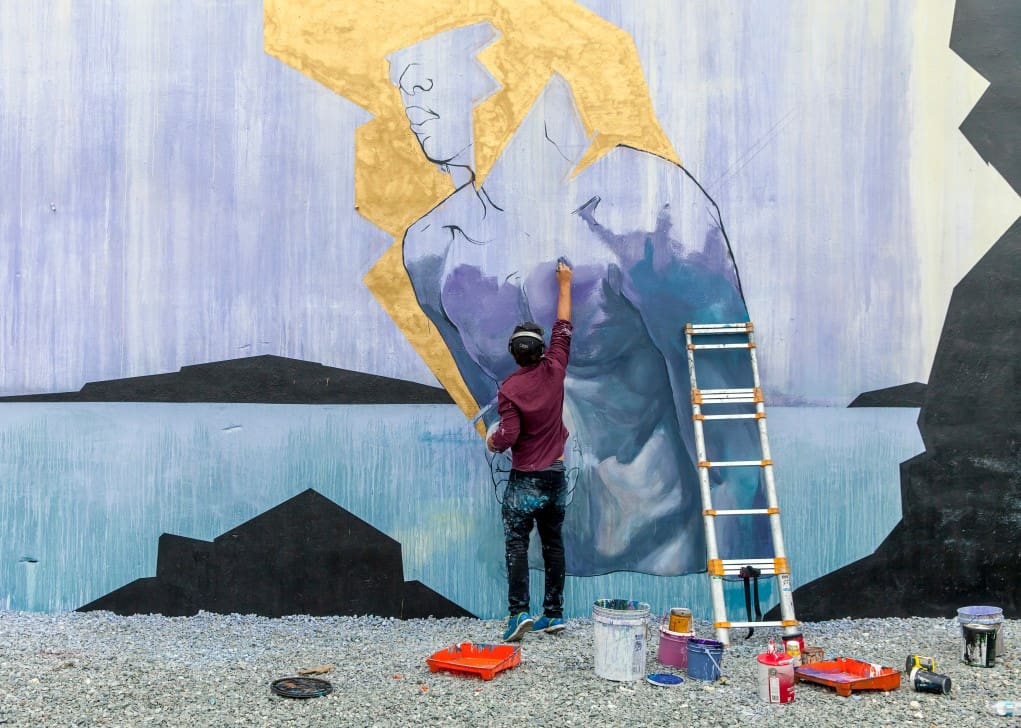
Compare Providers
Download our outplacement comparison sheet
Request Pricing
Compare our rates to other providers
Side hustles are all the rage right now. With the advent of Uber, Postmates, Lyft, and countless others, the gig economy is thriving. And while these types of jobs certainly do count as side hustles, more and more employees are creating their own side jobs that allow them to pursue passions that they otherwise wouldn’t with their normal job.
In short, everyone – it would seem – has some sort of side hustle right now. The real question on employers’ minds, though, is whether or not this is a good thing.
Let’s explore that question today.
First Off, What Exactly Is a Side Hustle?
The term ‘side hustle’ is thrown around quite a bit, and the truth of the matter is that it can mean many different things. At it’s core, a ‘side hustle’ is a slang way of saying ‘second job’ or project.
For example, driving for Uber to earn extra cash while holding another job (usually full-time) is a type of side hustle. This type of side hustle is mainly motivated by the increased income that comes along with putting in some extra work.
Another side hustle would be starting an Etsy store that sells craft items. Maybe, for example, you love to make jewelry but you don’t have the ability to fully switch careers to become a jeweler. So, the logical move is to open a small, online store so that you can hone your craft and make a little cash on the side.
Last year, CreditLoan surveyed 1,000 Americans about their side hustles and found that most of them (65.9 percent) held down side hustles to earn extra cash. 20 percent said that they were looking for a creative outlet, and 15 percent said that they were using their side hustle to start their own business.
Based on this study’s results, a lot of people use their side hustles to help with extra cash, to cover living expenses, and things like that with a decent percent striving for something more long term (a business, for example).
Side Hustles Are Extremely Popular
Though people have always pursued passions and worked part-time jobs to make ends meet, side hustle culture is kind of a new thing. It would seem, in today’s world, that everyone has something going on outside of their normal 9-5. And that’s because most do.
According to another study, this time by CareerBuilder, 29 percent of the 3,200+ people surveyed had side hustles. That seems low, right? Well, consider that the study also found that 44 percent of Millennials had side hustles, suggesting that as Milliennials take over the job market more and more, the amount of individuals working two jobs or more with increase with it.
Why is this?
Well, there aren’t too many studies out there that go into what caused the Millennial side hustle boom. However, on the monetary side of things, Millennials are strapped for cash nearly all of the time. Take student loans. Right now, Millennials have reportedly amassed over one trillion dollars in student loans. This has caused many Millennials to put off some of life’s biggest achievements, such as owning a home.
“I spend more time than I would like to admit looking at real estate listings online. I recently found a nice townhouse in my neighborhood that costs 25 times my annual salary, which is honestly a better deal than most other places in the surrounding area,” writes Gaby Del Valle for Vox.
“The moral of the story is that I’m convinced I’ll never be able to afford a home, at least not anywhere I’d like to live.”
This sentiment is echoed by countless Millenials. So much so that it’s ‘killing’ the housing market. In fact, many of the articles that claim Millennials are ‘killing’ such and such industry are because they simply don’t have the expendable income to partake in them, forcing them to do things another way.
But this article isn’t about the plight of Millennials, though I could go on about it at some length. This is about side hustles, and for many – me included – they offer a way to explore passions while also being able to eat, which – I hear – is important.
Side Hustles and Creativity: A Personal Experience
Though the majority of those with side hustles are doing it for the extra paycheck, a lot of people have realized that in today’s world its very possible to start your own side job online doing what you truly want to do.
For example, my 9-5 job is writing here and generally helping out with all of our marketing activities, such as strategy, reporting, and things of that nature. I like my job here (and no, I’m not just saying that because I’m writing this here). I get fulfillment out of my day-to-day work and love seeing my team’s ideas flourish and help the overall company. I strongly believe in the mission here, which can be summarized as helping people get back to work as quickly and painlessly as possible after a layoff. It’s nice to be working somewhere where I can say that.
But, with all of that said, my true passion is fiction. I have a degree in writing fiction (though I’ve been able to write full-time for the last 6 years writing nonfiction). I’m a voracious reader, and I love the actual craft of storytelling on a deeper level.
I know this is my passion because it’s the last thing I think about at night and it’s generally the first thing I think about in the morning after the violent thoughts about what I want to do to my alarm clock wear off.
So what does this do to my job? That’s probably the question that lingers in the back of every employer’s head, right? Why isn’t my focus solely on this job at all times?
But, really, why should it be?
Side Hustles and Day Job Impact
Now, I’m not going to say that everyone with a side hustle is good at maintaining their normal jobs. I’m sure that there are quite a few individuals out there that cannot have two things going on simultaneously. However, I’ll bet that those are far fewer than employers might fear.
Personally, when I’m working my day job, I’m working my day job. Sure, I think about stuff I may have to do later for my side gig, which is running a weekly semi-pro rated literary magazine, but that’s no different than someone sitting at work wondering what they’re going to do when they get home.
Having a side hustle that I value, that helps me develop as a writer (which is a skill I use here every day), that helps me get my creativity out, and have something to look forward to and strive towards that’s completely my own, is a vital ingredient – I believe – to being a well-rounded person.
Plus, there are tons of anecdotal and data-based claims that show that side hustles – especially creative ones – make workers a lot better at their current full-time roles.
One benefit is that workers who have side hustles develop skills that they may never have a chance to in their day-to-day work. This development can easily bleed over to their day job, though, making them a much more well-rounded worker.
“Building their own empire gives employees real-world, hands-on experience that they can use in their day jobs. The accountant that moonlights as a web designer can bring some of that creativity to the table of his 9 to 5er, offering creative solutions to otherwise stagnant problems,” writes Stephanie Weaver for Inc.
Other benefits, according to Weaver, include the fact that entrepreneurial workers are better in general because they are self-starters, problem-solvers, and more forward-thinking. Side Hustlers also seem to ask for raises less and are more satisfied with their day job because, it seems, that they earn an extra income (sometimes) from their side work and also use it to fill in the gaps left by their full-time employment.
Weaver concludes by saying that it’s vital for some transparency here, though.
“An employee with a side gig should feel comfortable enough at their workplace to declare that they have a side job,” she says.
“This omission is meant to provide transparency and that the employee has nothing to hide. Also, the worker should make it clear that they are not performing their side hustle during company hours.”
Workers with side hustles also need to promise that they will not take up company time to work on their side roles. For example, besides the odd email or quick task over my lunch break, I never let the two jobs I have mix. After all, I want my full-time company to succeed and I have to put in the effort to see that it does. The side hustle is a side hustle for a reason. It’s on the side. There are plenty of hours after work, before work, and on the weekend for me to get into that.
Still, allowing my passion project to flourish has helped me at my day job tremendously. I relate a lot to this quote from Greg Wacks, who was recently the Head of Creative Strategy for SnapChat and has formally worked with MTV and VH1.
“You take careers that help support you. The hard part is slowly over time your passions get put on the back-burner because you’re sucked into a culture and way of life that’s exciting and fun,” he told Forbes at an event.
“A side hustle gives you perspective on your day job. If you don’t have it, you get so immersed in what you are doing as your primary job that a piece of you inside deteriorates.”
This is the core of it all for me. I do enjoy my day job, but I also never want to let my passion for fiction fall to the wayside. I would hate to look back on my life in 40 years and wonder what could have happened if I tried. That’s a nightmare.
Should Employers Support Side Hustles?
Obviously, I’m pretty bias here. And, quite frankly, lucky. My bosses all support my side hustle and have an interest in it working out. They love that it helps me develop my skills as a writer and marketer. Plus, it’s really easy to see how I take things I’ve learned working at the company and have applied them to the side hustle and vice versa.
However, many employers take the opposite approach as if holding down a side hustle is an insult to full-time employment.
I’m not sure where this came from but it’s an antiquated view now. Maybe, back in the day, having to moonlight as a bartender or having a side business made it appear that the full-time employer wasn’t taking good enough care of the worker, forcing them to take up more jobs.
The rebuttal to that is: they probably weren’t providing the support that they needed to. If someone works 40 hours per week, they should have enough to live. We all know that this isn’t the case for a large spectrum of reasons, but for employers to stifle side hustles because it makes the company look bad in that light isn’t the worker’s problem – it’s the company’s. Maybe they should pay them more? I know that’s a crazy, but it just might work.
This example is obviously tied up more with income. However, most side hustlers are doing it for extra cash. Now, whether or not that is spending money or vital money need to survive is another concern that’s harder to shine a light on.
Either way, there are a lot of people in the gig economy working extra hours to earn some extra cash. So far, there doesn’t seem to be anywhere looking into whether or not moonlighting as an Uber drive makes you a better worker like having a creative or entrepreneurial side hustle does.
In the end, though, it doesn’t really matter. Why should an employer care what an employee does off the clock as long as it isn’t impacting the job?
Plus, what’s the alternative? Employers ban their workers from having or starting side jobs? How would that work? I know that if during my interviewing process at this job they told me that I’d have to shut down my side hustle to work here, I’d have passed on the offer (or lied, let’s be honest).
The best approach here is the opposite of the example I just used. Employers should look at side hustles as a signal that employees want more from life and are willing to work for it. This extends to both driving Uber or delivering for Postmates and more creative side hustles, too.
Supporting Side Hustles: Key Takeaways
For many employers, side hustles may still be viewed in a negative light. And that’s a very old school mentality to have, especially given the fact that nearly half of all Millennials – one of the biggest pools of modern day workers – have them.
At the end of the day, employees with side hustles have been proven to be more productive, creative, and self motivated. They use side hustles as a way to either earn a little spending money on the side, as a creative outlet, or to foster a small business that they know they cannot make their full-time job.
Besides the side gigs that are only there to spend money, you can view creative and business oriented side hustles as a free form of a development. After all, development can also lead to employees leaving an organization, but it rarely happens that way.
Instead, as reports show, employees with side hustles that develop their skills often times bring those skills into their full-time roles, ask for less raises, and are generally more well-rounded. All of these things are great for full-time employers.
However, like with all things, there are limits. If your employee is slacking on their job to drive Uber or conduct business for their side hustle while they should be dedicating their time to their full-time job, you need to have a chat with them.
There needs to be boundaries. I know, for me personally, that if I want to thrive in both of my roles, I need to divide my time. My full-time employment comes first and the side hustle second. There are enough hours in the day to do both and have neither fail.
At the same time, employers have to have boundaries, too. For example, if employers want to stop employees from working a side hustle outside of work hours, they’re going to meet a lot of push back. After all, that’s not company time and employers shouldn’t feel like it is.
Normally, this is a very easy balance to strike. And, for employers that do allow their staff members to thrive creatively outside of the office, the benefits abound. In fact, if you really want to get the most out of your side-hustling employees, you should support their efforts, show an interest in what they’re up to. Otherwise, you may never fully understand just how much talent is right under your nose.
In need of outplacement assistance?
At Careerminds, we care about people first. That’s why we offer personalized talent management solutions for every level at lower costs, globally.







